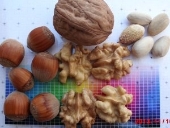Ken W Wilson wrote:CRT, it's good to know that. I was going to try autumn Olive but couldn't figure out if Juglone would be a problem. I planted dwarf redbuds from Oikos instead.
Although the source document for the elaeagnus idea (
http://www.futuretrees.org/archive/papers/40-clark-j-a-hemery-g-2006-the-use-of-the-autumn-olive-in-british-forestry-qjf-1004-285-288/file ) does not mention it explicitly, others say it is actually susceptible to juglone. So it's my impression that the autumn olive is planted as a nurse plant for the young walnut trees and will eventually fade away. However, see previous post about the slow buildup of juglone toxicity.
I've just planted some young walnut plants and plan to add elaeagnus developed from this year's cuttings in 2016. So let's talk about this again in 5 years or so

This link provides details about the experiment and findings reported in the futuretrees one:
http://forestry.oxfordjournals.org/content/81/5/631.full
Here's an older walnut-elaeagnus document from Canada:
http://cfs.nrcan.gc.ca/pubwarehouse/pdfs/9087.pdf - among other things it is interesting because it shows that, in a 10-year period, 1) elaeagnus was again the best nurse plant and 2) whereas alder had dieback at the end of this period, elaeagnus did not.









